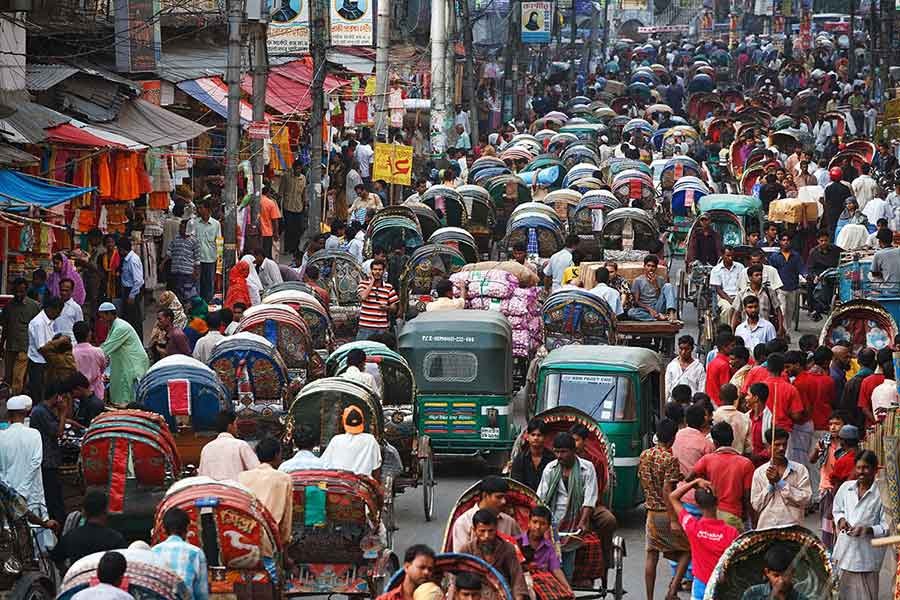
Published :
Updated :

That the capital is fast turning into a dysfunctional and therefore unliveable city has been once again indicated at a seminar on 'Density Zoning for Dhaka Metropolitan Development Plan Area'. Population density in the central areas of the city has already been in excess of the allowable limit. Whereas 150 -200 people per acre can be the maximum provided that its carrying capacity permits, the city on an average has more than 400 persons per acre. With uneven density of population, some core areas have long crossed their carrying capacity. In Gulshan, for example, the density of population is only 175 per hectare but in Gendaria it is as high as 2,746, as revealed in the seminar. Some areas are literally bursting to the seam. It is not only on spatial terms that the localities are under severe stress but also on several other counts such as utility services, retiring zones (parks) and play grounds. In some areas some of these facilities simply do not exist.
The seminar cites a study that found 40 per cent of the capital's wards within the highest level of density limit. If the trend of rise in population continues, other wards will find themselves in the same crowded league. The indication is quite ominous. The project director of the Detailed Area Plan (DAP) claims that Dhaka with 555 population per hectare (pph) tops the list of the dense cities. With 530 pph Hong Kong is its nearest competitor but Mumbai falls way behind with 436 pph. What is alarming is that Dhaka pulls people from all corners of the land and no other urban centre could be equally appealing to people looking for livelihoods. This should be a real headache for policymakers and planners but apart from occasional expression of concerns nothing concrete is being done in this direction.
If the excessive concentration of people in Dhaka city areas has already been taking its toll on its liveability, the number one accused seems to be high-rise buildings. Even the urban planning experts raise accusing fingers at the skyscrapers. But then the figures furnished by the DAP director that 85 per cent one-storey buildings dot the city as against only a minuscule 0.15 per cent high-rises look contradictory. This seems to be most unlikely. One explanation may be the predominance of slum people in some areas where people huddle together within the minimum possible space.
Building codes, which have rarely been followed, are not enough for a capital city. There is need for detailed plan of the spaces to be used for housing and the breathing spaces to be left for public recreation, games and spending idle times. These are areas that have been grossly neglected in this capital. Moreover, mindless land-filling and grabbing of vacant government land including canals, water retention areas and water bodies have gone on unopposed for a long period. Now there is chaos and anarchy all around. The city does not even have enough road space for its growing traffic. An alternative to this crowded city hub has to be found or decentralised venues set up to ease off the pressure.


 For all latest news, follow The Financial Express Google News channel.
For all latest news, follow The Financial Express Google News channel.